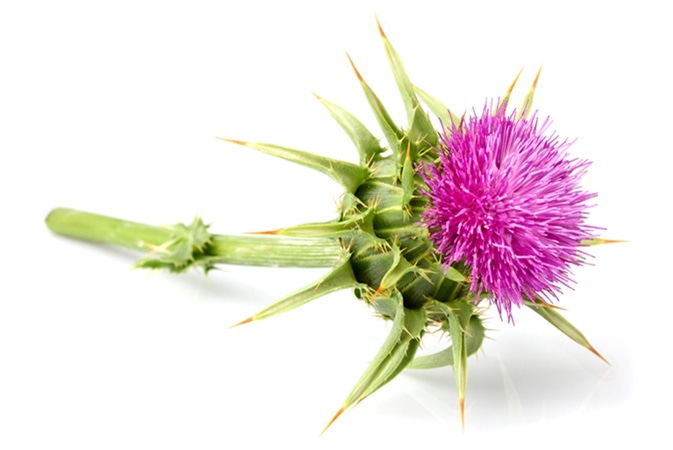Cheap elimite coupons no prescription
Milk thistle is a wild, commonly found plant with wide range of possible health benefits. This plant derives its name from its large white veins and big prickly leaves. Milk thistle can be consumed via oral capsules, tablets, or in powdered or liquid form.
Recent research has indicated unique properties of this herb are primarily due to an active ingredient found in this plant known as silymarin.

How has milk thistle been used?
Past records have indicated that milk thistle has been for used more than 2,000 years. During the 17th century, Nicholas Culpeper, a pharmacist, used the derivatives of milk thistle in treating the obstructions of liver and spleen. Nicholas advised his patients the consumption of milk thistle particularly to treat jaundice.
What are the medicinal properties of milk thistle?
Dried fruit from milk thistle is composed of flavonoid complex referred to as silymarin. Basically, silymarin is composed of three main components known as silibinin, silidianin, and silicristin. Out of these three components, silibinin is the most active and provides the majority of benefits delivered by milk thistle.
What amount of milk thistle is beneficial?
Research shows that 420 to 600 mg of silymarin per day may provide beneficial effects in patients affected with liver disease or abnormal liver function. However, patients with some types of chronic liver disease also experience improvement after prolonged use of silymarin.
What are the health benefits of milk thistle?
Various clinical studies have been done which have highlighted the benefits of milk thistle for various health conditions.
Hepatic conditions – Research shows that extracts of milk thistle may protect liver cells by inhibiting the influx of various damaging toxins and eliminating the entrapped toxins from the liver cells. Silymarin is a potent antioxidant which may support liver repair.
Current studies show that silymarin can prevent liver fibrosis. Use of milk thistle is advised to neutralize the detrimental effects of alcohol consumption on liver. This use has been supported by a double-blind clinical trial showing that, once alcohol use is stopped, milk thistle can reverse some of alcohol-induced liver damage. Some other studies have revealed that an improvement in the overall quality of life and life expectancy was improved in patients with liver cirrhosis.
One study has shown benefit in treating patients affected with amatoxin poisoning. Amatoxin poisoning is a form of mushroom poisoning that can be fatal.
Helpful in treating mental conditions – Recent studies have revealed that silymarin has neuroprotective effects on the body. One study conducted on mice revealed that silymarin inhibits beta-induced memory loss caused by oxidative stress and inflammation in mice brains. Silymarin also has shown benefit in patients with Alzheimer's disease, Parkinson's disease, and cerebral ischemia. It is believed that silymarin provides neuroprotective effects primarily due to its capacity to prevent oxidative stress in the brain. Silymarin also affects β-amyloid aggregation, inflammatory mechanisms, cellular apoptotic machinery, and estrogenic receptor mediation.
Treating spikes in blood glucose levels – A double-blind clinical trial showed that patients who consumed 200 mg of silymarin thrice daily for about four months had drastic declines in their blood sugar levels when compared with patients who consumed only a prescribed anti-diabetic drug. Another study showed that daily consumption of silymarin can lower HbA1c levels (a laboratory value reflecting 3-month average blood sugar levels). Besides these the antioxidant and anti-inflammatory properties exhibited by silymarin also reduces the risk of diabetic complications like neuropathy.
Promoting the production of breast milk – One clinical study was conducted on 50 lactating women who consumed 420 mg of silymarin daily for 63 days. Results of this study revealed that the milk production in such women showed an increase of 85.94% in comparison to healthy controls. This study concluded that silymarin is safe and effective to enhance the milk production in lactating mothers.
Preventing bone diseases – Age-related bone disorders like osteoporosis result from an imbalance between osteoclastic and osteoblastic activity. Silymarin has been shown to promote alkaline phosphatase activity of osteoblasts and inhibit tartrate-resistant acid phosphatase activity of osteoclasts. This results in preventing the progression of osteoporosis and thereby leads to an overall less progression of bone loss. Studies have revealed that combination of milk thistle extract and isoflavone has a potent action on bones which results due to increased osteogenic activity.
Benefits in treating cancer – The antioxidant effects of milk thistle may have anti-neoplastic effects. Some animal model studies show that silibinin (a component of milk thistle) can inhibit signaling pathways of cancer cells in preclinical studies. One study revealed that silibinin markedly reduced the proliferation, migration, and invasion and induced apoptosis of T24 and UM-UC-3 human bladder cancer cells. However, more detailed studies are required to fully explore and validate the effects of milk thistle in treating cancer.
Beneficial effects in treating acne – A randomized clinical trial conducted on 56 patients showed that milk thistle may be helpful in treating acne vulgaris. In these patients, serum levels of glutathione, malondialdehyde, and interleukin-8 were evaluated before and after 8-week treatment with oral silymarin in combination with other oral antioxidants. The results showed a reduction in serum malondialdehyde and increase in serum glutathione. This improvement in biochemical data suggests the beneficial effects of milk thistle in treating skin conditions like acne.
Sources
- www.omicsonline.org/…-with-papulopustular-acne-2155-9554.1000163.php
- https://www.ncbi.nlm.nih.gov/pubmed/28025940
- https://nccih.nih.gov/health/milkthistle/ataglance.htm
- https://www.mayoclinic.org/drugs-supplements-milk-thistle/art-20362885
- https://www.ncbi.nlm.nih.gov/pubmed/19577454
- https://www.uofmhealth.org/health-library/hn-2130007#hn-2130007-uses
- https://www.ncbi.nlm.nih.gov/pubmed/29190895
- https://www.ncbi.nlm.nih.gov/pubmed/23781510
- https://www.ncbi.nlm.nih.gov/pubmed/19260380
- https://www.ncbi.nlm.nih.gov/pubmed/25396404
- https://www.ncbi.nlm.nih.gov/pubmed/24118806
- https://www.ncbi.nlm.nih.gov/pubmed/24866499
- https://www.ncbi.nlm.nih.gov/pubmed/26755857
- https://www.ncbi.nlm.nih.gov/pubmed/26367736
- https://www.ncbi.nlm.nih.gov/pubmed/22555054
- https://www.ncbi.nlm.nih.gov/pubmed/23492971
Further Reading
- All Complementary Medicine Content
Last Updated: Feb 13, 2019

Written by
Akshima Sahi
Akshima is a registered dentist and seasoned medical writer from Dharamshala, India. Akshima is actively involved in educating people about the importance of good dental health. She examines patients and lends free counseling sessions. Taking her passion for medical writing ahead, her aim is to educate the masses about the value of good oral health.
Source: Read Full Article
